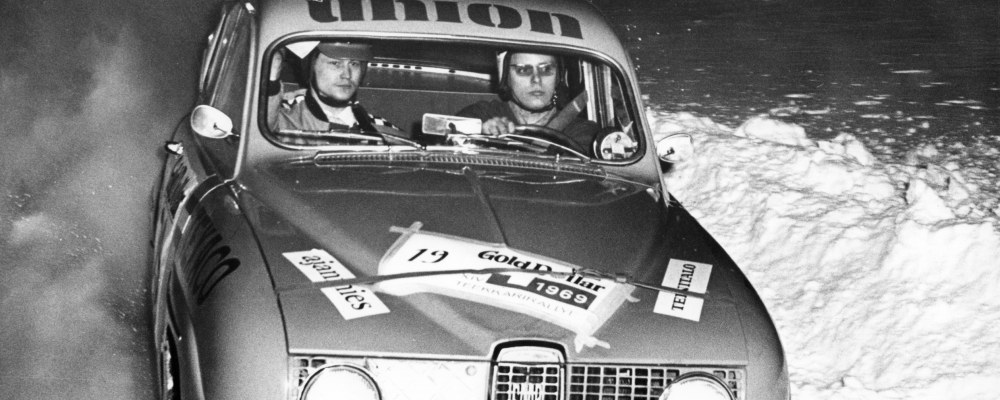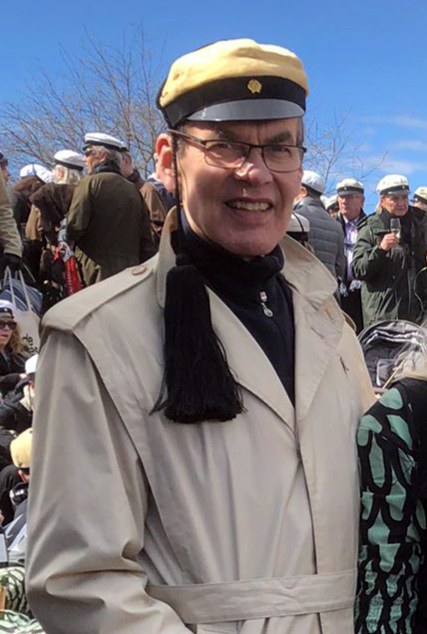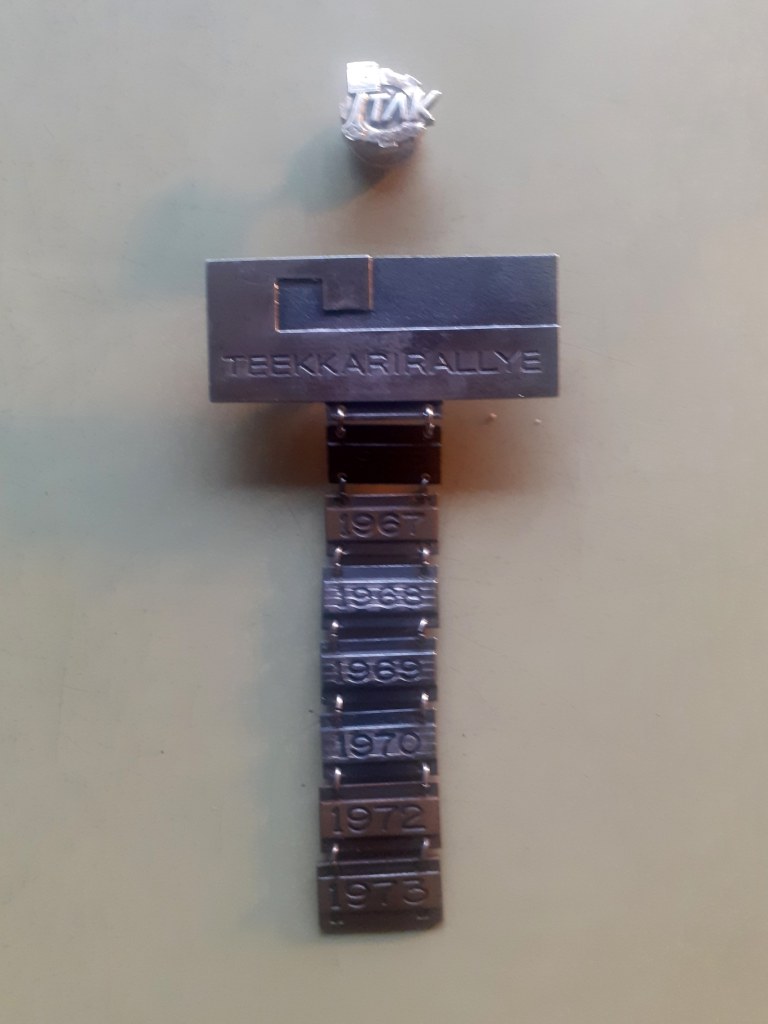
As soon as Juhani Koskinen started studying in Otaniemi, he joined the Teekkari Car Club, known in Finnish as Teekkarien Autokerho (TAK). It was the autumn of 1965 and the club had been organising the Teekkarirallye for about ten years. Already in early 1966, Koskinen made his way to the wintery forests of Siuntio, west of Espoo, to keep unauthorised individuals away from the closed special stages.
“I’ve been interested in cars ever since I was a little boy. My parents remember my older brother saying that when he grows up, he’ll take our mom and dad on a ride in a horse carriage, but I answered that I’ll drive them around in a car,” says Koskinen.
During the studying year 1967–68, Koskinen was the secretary of the Car Club and it was his job to find awards for the podium winners of Teekkarirallye. He came up with an award that made reference to Dipoli, built by the Student Union (TKY) of the Helsinki University of Technology and completed in Otaniemi in 1966. For many years, Dipoli hosted the Student Union and is now the headquarters of the Aalto University.
“The name ‘Dipoli’ refers to ‘Old Poly’ (Vanha Poli in Finnish), the Polytechnic Students’ Union on Lönnrotinkatu in Helsinki. Di means two and dipoli (dipole in English) refers to two poles in electricity. Its shape resembles the letter V with little balls on top,” explains Koskinen.
Koskinen led the way as the Car Club decided to make highly unique awards for Teekkarirallye: they asked a silversmith to make V-shaped trophies. In addition to these, the Car Club obtained honorary awards from sponsors.
“We got them using the typical strategy of teekkari: begging from Finnish industry. We got designer vases from Riihimäen Lasi.”
There was a separate category for women in the rally, and their honorary award also differed from the men's awards. In 1951, the Student Union of the Helsinki University of Technology had sold scale models of the Paavo Nurmi runner statue to raise funds for building the student village. The original full size statue stands e.g. in front of The Olympic Stadium of Helsinki, the headquarters of the International Olympic Committee in Lausanne, Switzerland, and in Turku, the home town of Paavo Nurmi. There were some model statues left over, so the Car Club decided to present the statue as honorary award in the women's category.
“Almost all tech students back then were men,” says Koskinen.
Pranks have been played during rallies
Since the rally was organised by teekkarit, Teekkarirallye always had some humour in it. Juhani Koskinen shares several stories of jäynäs or practical jokes played by teekkarit.
Towards the end of the 1960s, the Car Club decided to organise a special stage of the competition on the ice of Laajalahti Bay (or Laajatahna, as the students called the bay with its dirty water). The prank consisted of driving the special stage not by cars, but by snowmobiles, which Koskinen had borrowed from his summer job employer. The driver and the navigator had a set amount of time to complete the marked course on a snowmobile. They had to estimate the speed needed.
A second prank had to do with the official signs along the route. The Car Club placed a warning triangle in the middle of a long straight stretch. Since Teekkarirallye was driven near the beginning of the year, the race was partly driven in the dark. The drivers saw the warning in their headlights and slowed down. Once they reached the sign, they could finally make out what it read: 67 kilometres to Otasauna.
“Jäynäs were well-liked among the competitors and they sparked lively discussion on the benches of Otasauna after the competition,” says Koskinen.
Real rallying at full speed!
Teekkarirallye is one of the oldest rally competitions in Finland. Teekkari Car Club organised the event for the first time in 1955. Hankiralli (Snow Rally) also dates back to the same year. Only the Jyväskylän Suurajot (Jyväskylä Rally), now known as Secto Rally Finland, is older – it was first driven in 1951.
For the first few years Teekkarirallye was a navigation and regularity competition where you had to complete a set course while maintaining a predetermined average speed and drive past checkpoints at exactly the right time to the second. Back then, the competition was known as Otaniemen sauna-ajo (“Otaniemi sauna drive”) and Sinne Tänne -ajo (“Here and There drive”).
In 1958, Teekkarirallye became a real rally, so to say. The competitors were expected to complete the special stages as fast as possible – at full speed, as Koskinen puts it. Over the years, the rally was won by names such as Hannu Mikkola, Rauno Aaltonen and Pauli Toivonen.
In 1970, Teekkarirallye was an official event of the Finnish Rally Championship.
“On the day of the race, there was a terrible blizzard. We had to plough the roads non-stop and the costs of the rally kept rising. The cars also took shocks on the track,” says Koskinen, recalling the event.
He was the assistant director of the competition at the time. He explains why the publication of the results of the Finnish Championship Teekkarirallye were delayed.
“We were puzzled by the fact that the cars of a particular brand that had a poor track record now handled the rough conditions on the soft and bumpy roads exceptionally well. We took a couple of the top cars to inspect them at the Car Club’s garage and noticed that their front subframe and wheel suspension had been reinforced, which was against the rules.”
Koskinen adds that these cars were disqualified, but a third racing car of the same brand got away before the inspection.
(The article continues below the photo.)

Koskinen’s time in the Teekkari Car Club ended in spring 1970 when he graduated. Teekkarirallye continued for another three years, until the Car Club no longer received permission to organise the competition. According to the 50th anniversary history publication of the Teekkari Car Club, one of the reasons for this was the view of the Finnish national competition committee for motor racing, AKK.
“Due to the rally enthusiasm of the public, AKK decided to grant competition permits to various car clubs in the provinces rather than tech students in the Helsinki Metropolitan Area who come from all over the country,” says Koskinen.
Pursuing an automotive career
Juhani Koskinen originally studied in Otaniemi in the construction line of the department of mechanical engineering where one of the optional subjects was automotive engineering, but when the Helsinki University of Technology established an automotive engineering line in autumn 1968, Koskinen switched lines.
“There were seven of us fourth-year constructors who switched lines, and we were all members of the Teekkari Car Club and officials of Teekkarirallye. It only took us one school year to complete the third and fourth-year study programme, while Associate Professor Antti Saarialho prepared a lecture series and tested it on us. After graduating, we found jobs in automotive companies, the Ministry of Transport and in the industry.”
One of Koskinen's principles has been to only drive cars by manufacturers that he has worked for: Ford, Saab, Peugeot/Citroën (Talbot), Opel or Porsche.
“But Porsche isn’t a family car and I have a summer cottage, so I need an estate car.”
Koskinen says that he has had the opportunity to drive so many extraordinary cars in his lifetime that his current car is “perfectly ordinary”, a Peugeot estate car. Actually, he has two of them: a 2002 and a 2004 model.
“As an automotive engineer, I can service and repair them myself, and I have all the tools I need. One of the cars is always in active use while the other one is standing by. I’ve driven about 225 000 kilometres in both. They’re getting to be the age where I’m starting to eye hybrid cars.”
